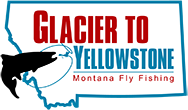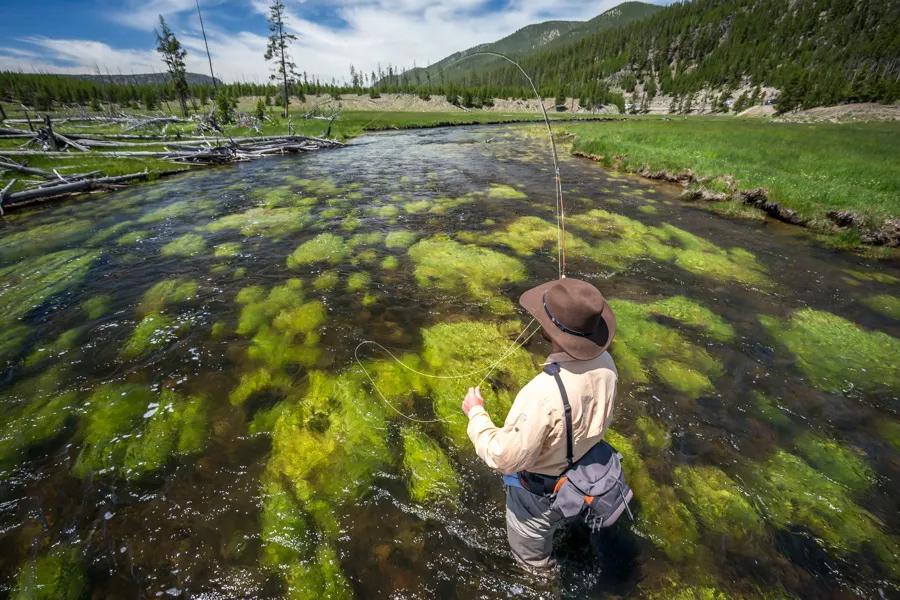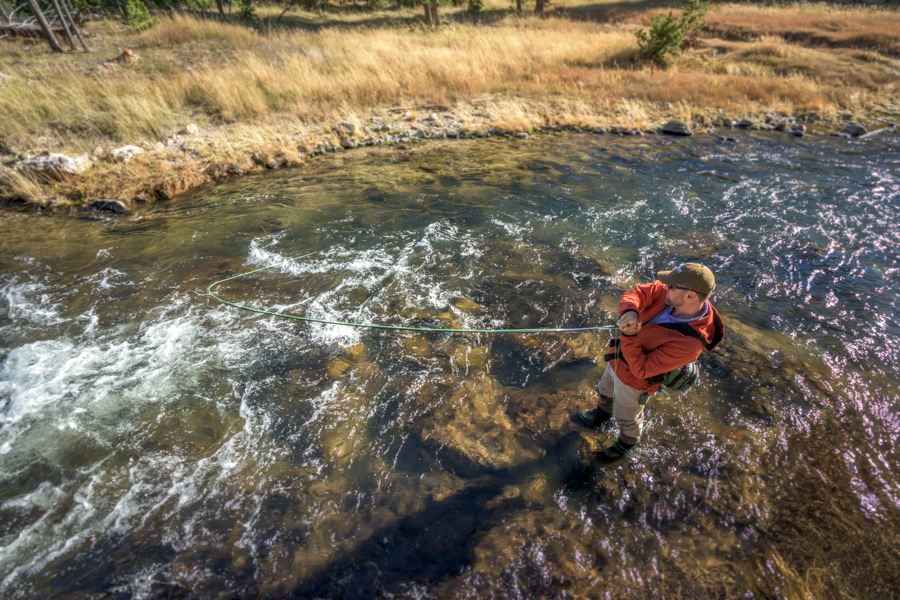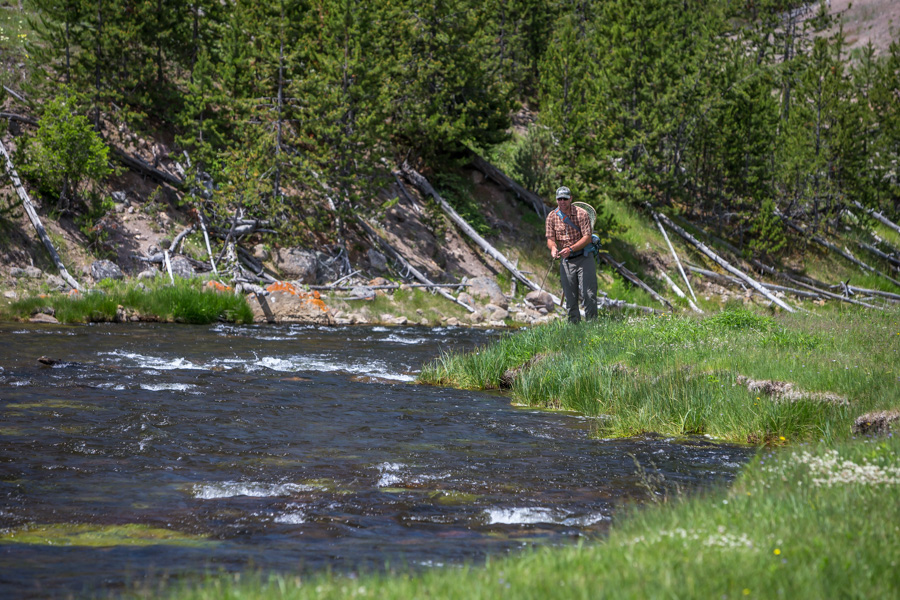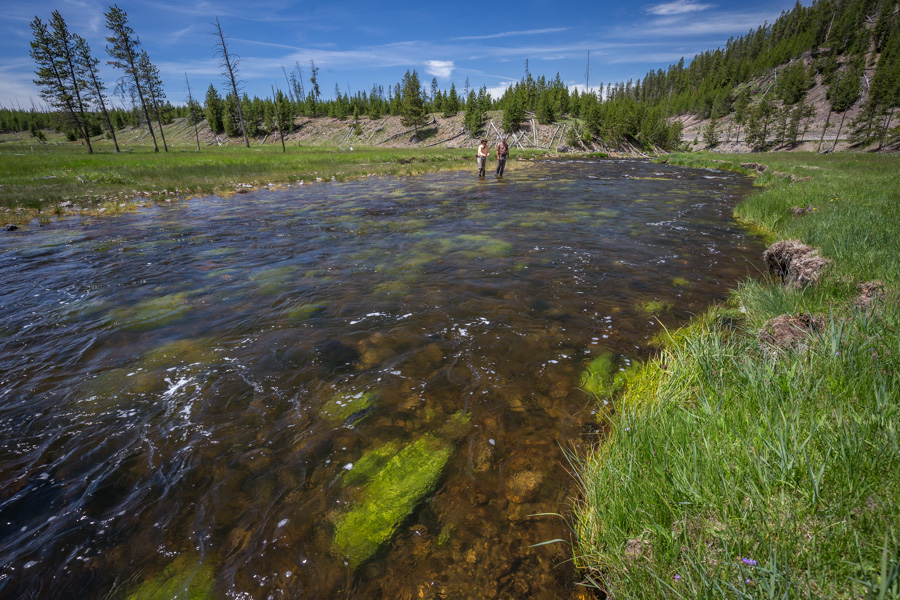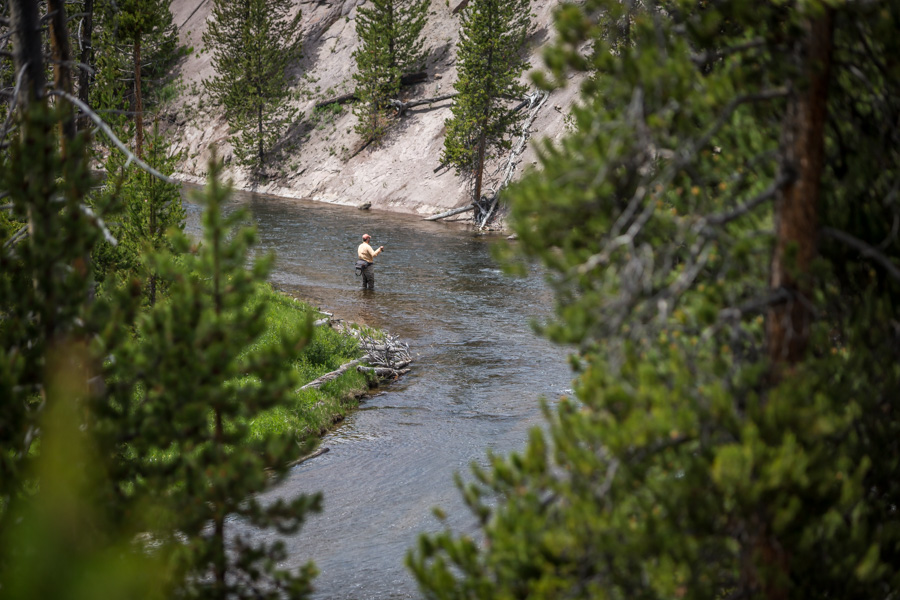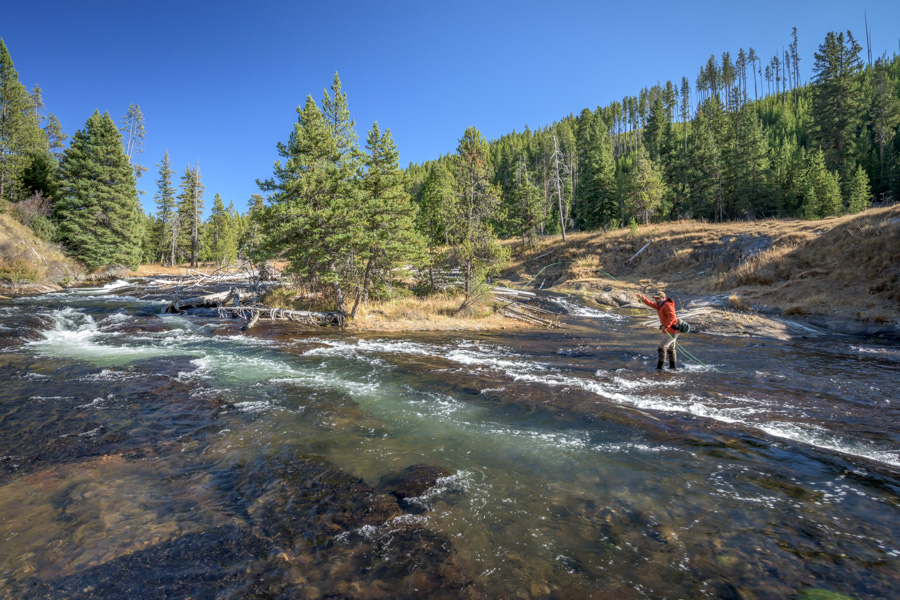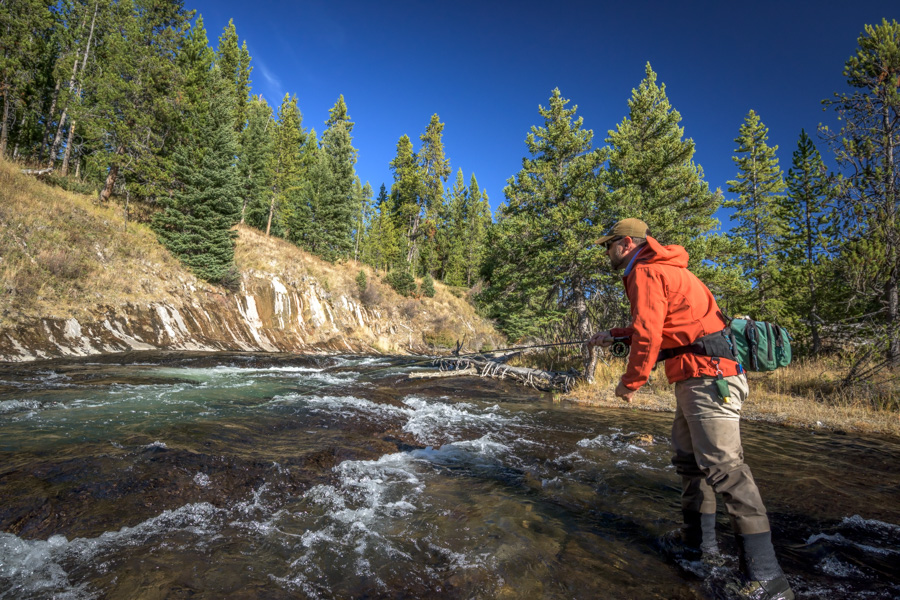From its source waters, Grebe and Wolf Lakes, the Gibbon River flows through timbered terrain until it crosses the Norris-Canyon Road and enters Virginia Meadows on its way to the Norris Campground area. Anglers can expect to fish for browns, rainbows and brook trout. Joining Solfatara Creek at Norris Junction, the Gibbon gradually gains stature along with wary browns. Down further lies the Gibbon Meadow followed by a nice fishing section before Gibbons Falls. From Gibbon Falls, the Gibbon resembles more of a freestone creek until it reaches the meadow section and the confluence with the Firehole at Madison Campground. The best fishing period is the latter part of June and fall, but the fish also respond to a well-placed hopper during the heat of summer. The following information begins at Grebe Lake on the Canyon to Norris section of the Grand Loop Road. The Gibbon River flows down to Norris Campground, circles around Norris Geyser Basin, then follows a southerly course to the point where the Gibbon joins the Firehole to form the Madison River.
Grebe Lake (headwaters of the Gibbon River)
The trail is an easy three-mile hike on a level trail, which no doubt adds to this lake's popularity for scenery and good fishing. The trailhead parking lot is 3.6 miles from Canyon Junction or 8.4 miles from Norris Junction. Grebe Lake is good fishing for both rainbows and arctic gray-ling. The rainbows generally run in the 10- to 12-inch range. Anglers also have the opportunity to catch native arctic grayling. Generally the trail is passable by mid-June. A float tube is recommended, although wading is best accomplished on the northern and eastern shoreline.
Gibbon River Lakes
Wolf Lake is downstream from Grebe Lake. Wolf Lake is generally described as good fishing for both rainbows and grayling. A small lake a little over 50 acres in grizzly country, the lake may be accessed from Grebe Lake or from Ice Lake, which is reached three and a half miles east of Norris Junction. Follow the trail for a half-mile to its junction with the Howard Eaton Trail at Ice Lake (fishless) and continue east. The trail continues on the Wolf Lake Trail, a total of four miles from the trailhead.
Virginia Cascade Drive Access
The access road is available for hikers who would like to get close to the Gibbon River. This section of road is 1.7 miles east of the Norris Junction and provides access to Virginia Meadows.
Norris Campground, Norris Meadow
The meadow section around the campground is heavily fished, and during the heat of summer with increased numbers of campers the trout learn to be wary after a couple of months of bombardment.
For the next 15 miles, the Gibbon rushes to meet the Firehole. For the most part the road parallels the river through a series of meadows before dropping down into the Gibbon Canyon to Gibbon Falls. During the heat of summer the meadow sections can present some challenging fishing. In lieu of a good hatch, the best bet here is if the sky is overcast, the wind is blowing and the hoppers are popping. Below the meadows the river picks up speed and flows over small cascades. Pocket water and some pools are available as the river narrows and picks up speed before plunging over Gibbon Falls. Just below the falls is the Gibbon Falls Picnic Area. Anglers may hike upriver a few hundred yards to access Canyon Creek, which joins the Gibbon River on the east bank.
Canyon Creek offers good fishing for small brook trout in the 6- to 8-inch range, as well as a few resident grayling. Below the falls is a popular gathering spot for anglers fishing the fall brown trout spawning run. During the heat of summer, this section of the Gibbon River draws savvy anglers. The river offers riffles and long runs, and the road is high up on the mountain, which provides some sense of solitude. This last section flows through carved bench land until it meets the meadow section at Madison Junction.
Contact Montana Angler Fly Fishing for guided fly fishing trips in Yellowstone National Park
